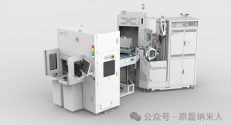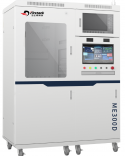Research on High-Precision Position Detection Based on a Driven Laser Spot in an Extreme Ultraviolet Light Source
State Key Laboratory of Laser Interaction with Matter, Changchun Institute of Optics, Fine Mechanics and Physics, Chinese Academy of Sciences, Changchun 130033, China
University of Chinese Academy of Sciences, Beijing 100049, China
University of Chinese Academy of Sciences, Beijing 100049, China
Abstract
Laser-spot-location detection technology based on photodetectors is widely used in the aerospace, medical, military and communication fields. However, most of the current research focuses on continuous laser detection in the visible and near-infrared bands, and the real-time high-precision position detection of a long-wave infrared pulsed laser is lacking. In this paper, a spot-position detection system based on a four-quadrant detector is designed for a 10.6 μm CO2-driven laser in extreme ultraviolet light source, and a second-order extended error compensation algorithm based on a Gaussian-spot model is proposed. Finally, the algorithm is verified and analyzed experimentally by a spot-position detection system under both focusing and defocusing conditions. The experimental results show that the root-mean-square error, maximum absolute error and average absolute error of the second-order error compensation algorithm are significantly reduced compared with the traditional algorithm, and the detection accuracy of the spot-position is better than 9 μm. The above results show that this spot-position detection system has obvious advantages and high accuracy, which can realize the high-precision real-time detection of a laser’s spot position to obtain accurate spot position information, provide feedback adjustments for subsequent beam pointing control, and provide a theoretical basis for the beam pointing stability of the extreme ultraviolet light source system.
View attachment 123957


